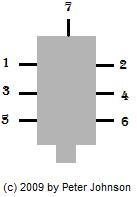After being side-tracked onto another project I got back to the TomTom datalogger application and believe I’ve solved the problem with intermittent pauses in the GPS output from /var/run/gpsfeed. The problem ended up being easy to repeat on the bench and in fact I could see the same pauses doing a cat /var/run/gpsfeed from the serial console but only when my application was running in the background. It only occured when my main loop was set to check for new input every 200mS, when I put it up to one second everything started working smoothly.
The TomTom is set to output a GPS fix approximately every 800mS so 200mS seemed like a fairly appropriate value to keep the buffers flushed and everything running along smoothly, but instead it appears the driver may have a problem if the buffer gets emptied too often. I’m using C++ streams so just have a fairly typical while stream.good style loop to process any new data received on a character basis and go ahead and process the data when a new $GPRMC / $GPGGA pair has been received. It will need some field testing but fingers crossed problem is now solved.

